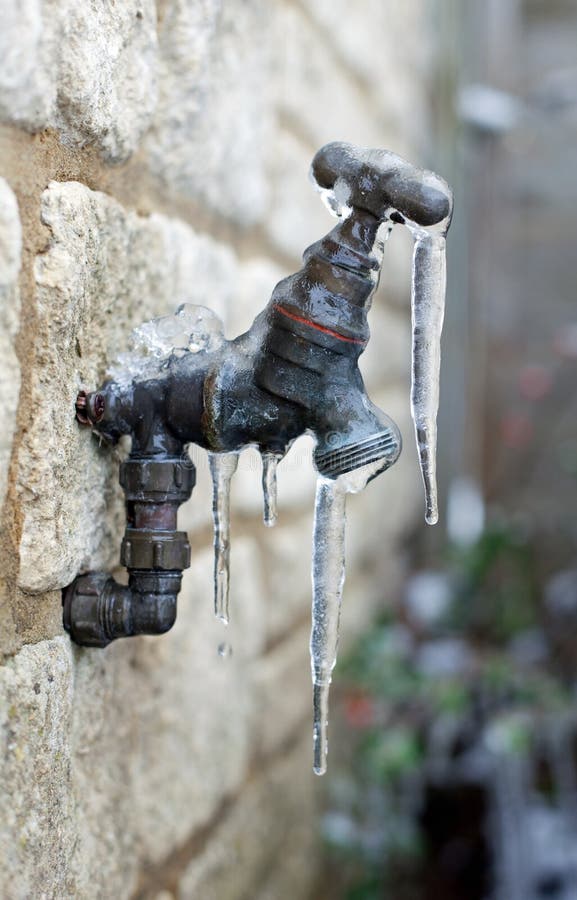Tips to Defend Plumbing System from Cold Weather: Essential Strategies
Tips to Defend Plumbing System from Cold Weather: Essential Strategies
Blog Article
We have stumbled on this post relating to 6 Ways to Prevent Frozen Pipes below on the net and think it made sense to discuss it with you on this page.
:strip_icc()/snow-outdoor-faucet-pipes-4af65d1e5e904fb1aa7bf74071fe5d89.jpg)
Cold weather can wreak havoc on your plumbing, particularly by freezing pipes. Here's how to stop it from taking place and what to do if it does.
Intro
As temperature levels decrease, the risk of icy pipes increases, possibly resulting in costly repair services and water damage. Comprehending exactly how to stop icy pipes is critical for house owners in cold climates.
Comprehending Icy Pipelines
What creates pipelines to ice up?
Pipes freeze when subjected to temperatures listed below 32 ° F (0 ° C) for expanded durations. As water inside the pipelines freezes, it broadens, putting pressure on the pipe walls and possibly causing them to rupture.
Threats and damages
Frozen pipes can cause supply of water disruptions, property damages, and costly fixings. Ruptured pipes can flooding homes and create extensive structural damage.
Indications of Frozen Piping
Recognizing frozen pipelines early can prevent them from rupturing.
Just how to recognize frozen pipes
Seek reduced water flow from faucets, unusual smells or noises from pipes, and visible frost on subjected pipelines.
Avoidance Tips
Protecting vulnerable pipes
Cover pipes in insulation sleeves or use heat tape to safeguard them from freezing temperatures. Concentrate on pipelines in unheated or exterior locations of the home.
Home heating techniques
Keep indoor rooms sufficiently heated, especially locations with plumbing. Open up cabinet doors to allow cozy air to flow around pipelines under sinks.
Shielding Outside Plumbing
Yard pipes and outside faucets
Disconnect and drain garden hose pipes before wintertime. Install frost-proof faucets or cover outside taps with protected caps.
What to Do If Your Pipelines Freeze
Immediate actions to take
If you believe frozen pipes, maintain faucets open up to ease stress as the ice melts. Utilize a hairdryer or towels soaked in hot water to thaw pipes gradually.
Long-Term Solutions
Structural modifications
Think about rerouting pipelines away from exterior walls or unheated areas. Add additional insulation to attics, cellars, and crawl spaces.
Upgrading insulation
Purchase premium insulation for pipelines, attic rooms, and walls. Correct insulation helps preserve consistent temperature levels and lowers the threat of icy pipelines.
Conclusion
Avoiding icy pipelines calls for positive procedures and quick feedbacks. By comprehending the reasons, indications, and preventive measures, home owners can safeguard their plumbing throughout cold weather.
5 Ways to Prevent Frozen Pipes
Drain Outdoor Faucets and Disconnect Hoses
First, close the shut-off valve that controls the flow of water in the pipe to your outdoor faucet. Then, head outside to disconnect and drain your hose and open the outdoor faucet to allow the water to completely drain out of the line. Turn off the faucet when done. Finally, head back to the shut-off valve and drain the remaining water inside the pipe into a bucket or container. Additionally, if you have a home irrigation system, you should consider hiring an expert to clear the system of water each year.
Insulate Pipes
One of the best and most cost-effective methods for preventing frozen water pipes is to wrap your pipes with insulation. This is especially important for areas in your home that aren’t exposed to heat, such as an attic. We suggest using foam sleeves, which can typically be found at your local hardware store.
Keep Heat Running at 65
Your pipes are located inside your walls, and the temperature there is much colder than the rest of the house. To prevent your pipes from freezing, The Insurance Information Institute suggests that you keep your home heated to at least 65 degrees, even when traveling. You may want to invest in smart devices that can keep an eye on the temperature in your home while you’re away.
Leave Water Dripping
Moving water — even a small trickle — can prevent ice from forming inside your pipes. When freezing temps are imminent, start a drip of water from all faucets that serve exposed pipes. Leaving a few faucets running will also help relieve pressure inside the pipes and help prevent a rupture if the water inside freezes.
Open Cupboard Doors
Warm your kitchen and bathroom pipes by opening cupboards and vanities. You should also leave your interior doors ajar to help warm air circulate evenly throughout your home.

We had been shown that write-up on 6 Ways to Prevent Frozen Pipes through a buddy on another website. Sharing is caring. Who knows, you may just be doing someone a favor. I am grateful for your time. Don't forget to check our blog back soon.
Estimating Report this page